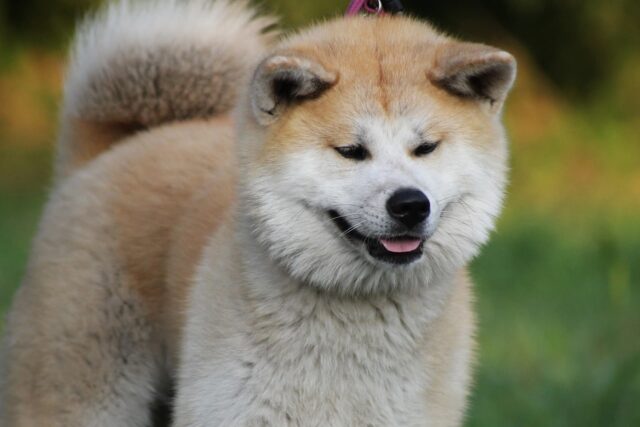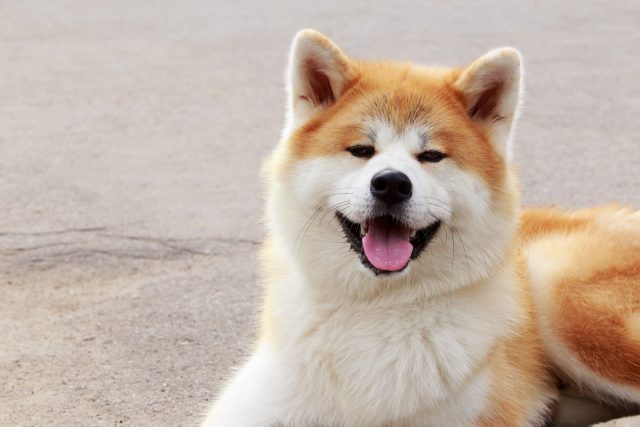Akitas are known for their majestic appearance, strong build, and dignified demeanor. With their thick double coats, curled tails, and expressive eyes, they exude both beauty and power. Originally bred in Japan, Akitas were used for hunting and guarding, which speaks to their courage and loyalty. They have a unique personality mix—stoic and serious one moment, playful and goofy the next. Despite their impressive presence, they are incredibly affectionate with their families. However, like all dogs, Akita’s age, and their boundless energy gradually gives way to a more relaxed lifestyle. Typically, an Akita is considered a senior around 7 to 9 years old, depending on factors like health and genetics. As they enter their golden years, these noble dogs might swap their intense guarding duties and energetic playtime for more leisurely activities and cozy naps. Let’s dive into the different stages of an Akita’s life and see how these regal canines age with grace, humor, and a lot of love.

1. The Puppy Phase: Fluffy Balls of Mischief
In the first year of an Akita’s life, they are fluffy, adorable, and full of energy. Akita puppies are curious explorers, eager to discover the world around them. This phase is filled with playful antics, boundless energy, and an occasional bout of stubbornness. Early training and socialization are crucial, as these puppies are intelligent and independent-minded. Despite their occasional mischief, they are incredibly loving and form strong bonds with their families. The puppy phase is a time of joy and learning, with plenty of opportunities to witness their goofy and endearing personalities.
2. The Adolescent Years: The Independent Teenager
From around 1 to 2 years old, Akitas enter their adolescent phase, often marked by increased independence and a touch of stubbornness. Adolescent Akitas are still full of life, but they may also test boundaries as they explore their independence. This phase can be both challenging and entertaining, as they are highly intelligent and sometimes too clever for their good. Consistent training and plenty of physical and mental stimulation are key to channeling their energy and keeping them well-behaved. Despite their sometimes aloof nature, they are incredibly loyal and enjoy spending time with their families. This phase is a time of growth and learning, as Akitas develop their unique personalities and deepen their bonds with their loved ones.
3. The Prime Years: Strong and Loyal Companions
Between 2 and 7 years old, Akitas are in their prime. These years are characterized by a balance of energy and maturity. Akitas in their prime are confident, strong, and protective of their families. They enjoy engaging in various physical activities, from hiking and playing fetch to guarding their territory. Their keen intelligence makes them excellent problem solvers, though this can sometimes lead to mischief if they become bored. This is also the time when their loyalty and love for their families are most evident, making them excellent companions and guardians. Despite their sometimes aloof nature, they are affectionate with those they trust. The prime years are a time of adventure and bonding, with Akitas bringing joy and a sense of security to every activity.
4. The Middle Ages: A Gentle Slowdown
Around 7 to 9 years old, Akitas start to enter their middle-aged years. During this time, they may begin to slow down slightly, preferring more moderate activities over the intense exercise they once loved. This phase often brings a more balanced and relaxed attitude, although they still enjoy walks, playtime, and mentally stimulating activities. Akitas may start to show signs of aging, such as graying fur around the muzzle and a decrease in stamina. Despite these changes, they remain loyal and affectionate companions, enjoying the company of their families. Middle-aged Akitas often become more content with a mix of activity and relaxation, making them perfect for active yet balanced households.
5. The Senior Years: Wise and Gentle Elders
By the time an Akita reaches 7 to 9 years old, they are generally considered seniors. This phase is marked by a noticeable reduction in energy levels and a greater appreciation for rest and comfort. Senior Akitas may develop age-related health issues such as arthritis, hip dysplasia, or vision problems like cataracts, which can affect their mobility and overall well-being. However, their loyal and protective nature remains unchanged, and they continue to bring joy and comfort to their families. They enjoy gentler activities, like leisurely walks and plenty of cuddle time in their favorite spots. Their bond with their human companions deepens, and they often become even more affectionate and devoted as they age.
Akitas, with their majestic presence and loyal hearts, bring joy and security to every stage of life. From the playful and curious puppy phase to the wise and gentle senior years, these dogs are full of character, love, and a touch of humor. While they may slow down as they age, their loyalty and affection for their families never waver. Each stage offers unique experiences and memories, making life with an Akita a fulfilling and heartwarming journey. Whether they’re eagerly guarding the home or enjoying a quiet day at rest, Akitas has a special way of making every moment meaningful. So, cherish every stage with your Akita, and enjoy the endless love and companionship they bring into your life, from their regal beginnings to their golden years.
Frequently Asked Questions Someone Might Have About Their Aging Akita

 Toledo, United States.
Toledo, United States.